Abstract
OBJECTIVES--The main objective is to describe the potential health and work problems of the aging employees in the Dutch working population. In this way, we can identify groups at extra risk of specific health problems. METHODS--In The Netherlands, occupational health services gather questionnaire data about work and health as part of periodical occupational health surveys (POHSs). These data from the POHSs of complaints about health and working conditions, aggregated into occupational groups and age categories, are used to provide indications for groups at extra risk of specific health problems. These problems are assessed by overviews of the relation between age and complaints about health and working conditions. RESULTS--Almost all of the health questions show an increase in health complaints with increasing age. White collar workers, especially the high grade white collar workers, usually have lower complaint percentages on health questions than blue collar workers. Female employees have relatively high complaint percentages on the health questions. Differences between occupational groups in the complaints about work and working conditions reflect the differences in work demands and exposure. The relation between age and work complaints is generally inconsistent and weak. The complaint percentages on work questions of female employees tend to be equal to or lower than those of the male employees. CONCLUSIONS--The absence of a clear increase of work complaints with advancing age in the presence of a decrease in health and working capacity may be explained by a selective turnover in the working population, especially in demanding occupations. To enhance the work participation of older employees it may be necessary to reduce the work demands and to increase decision latitude.
Full text
PDF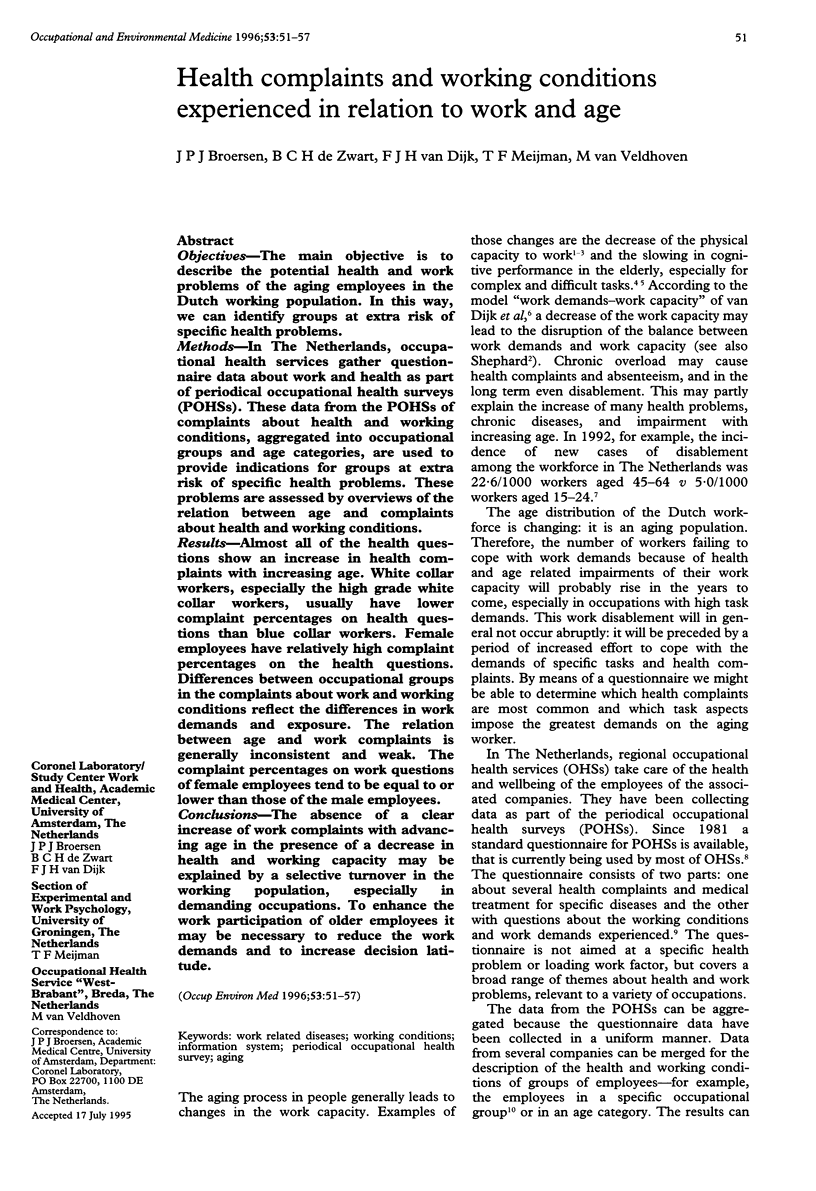
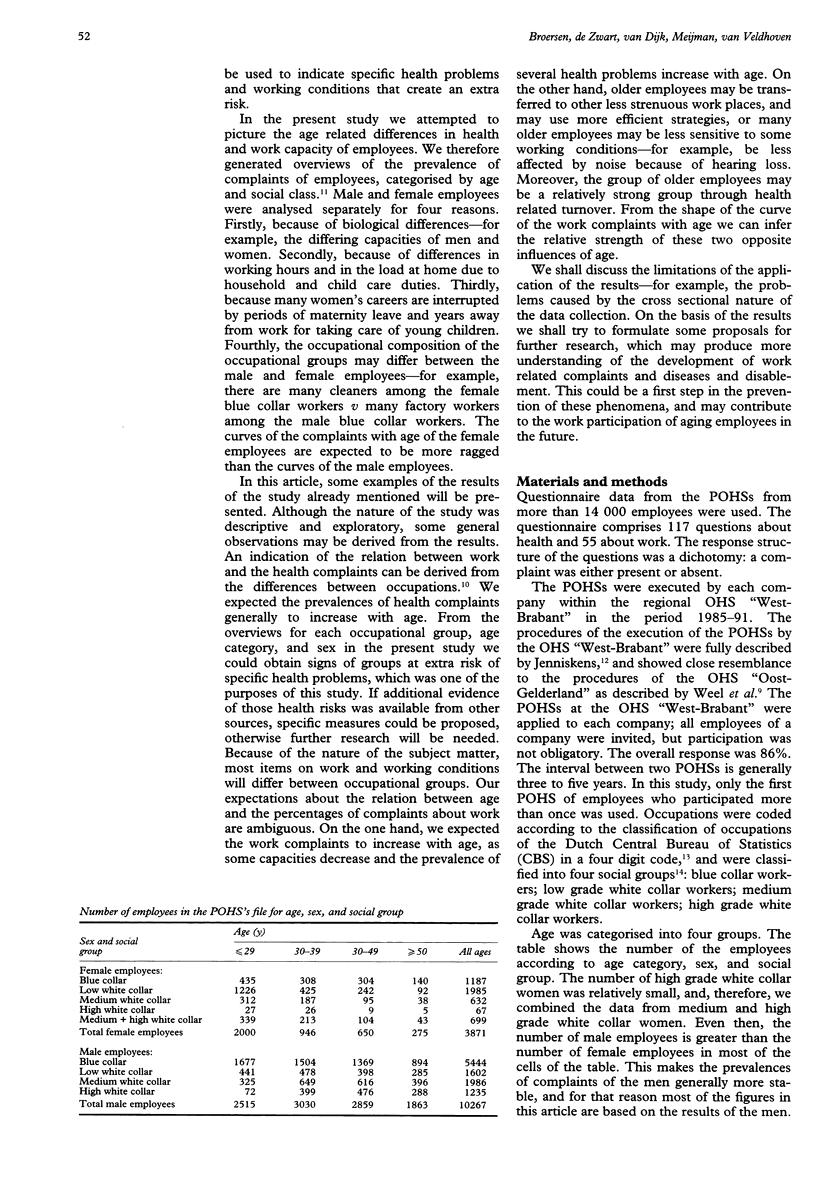
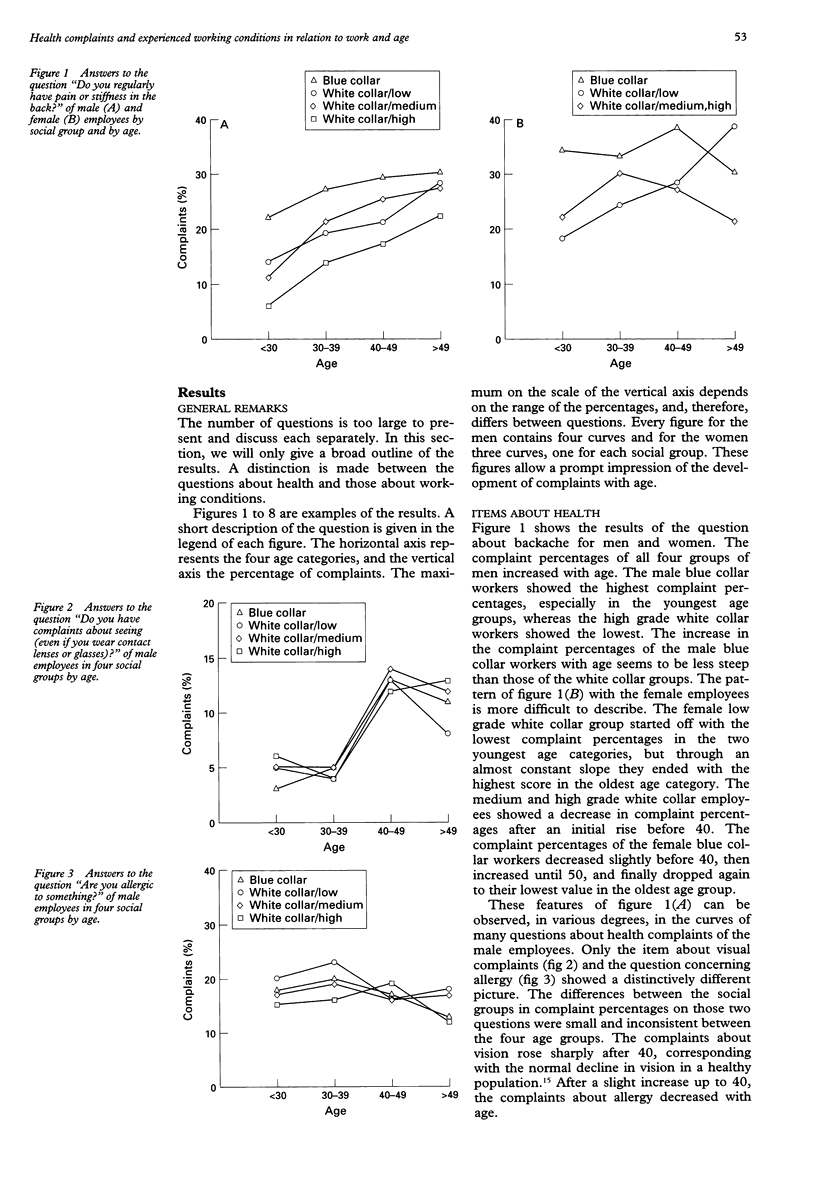
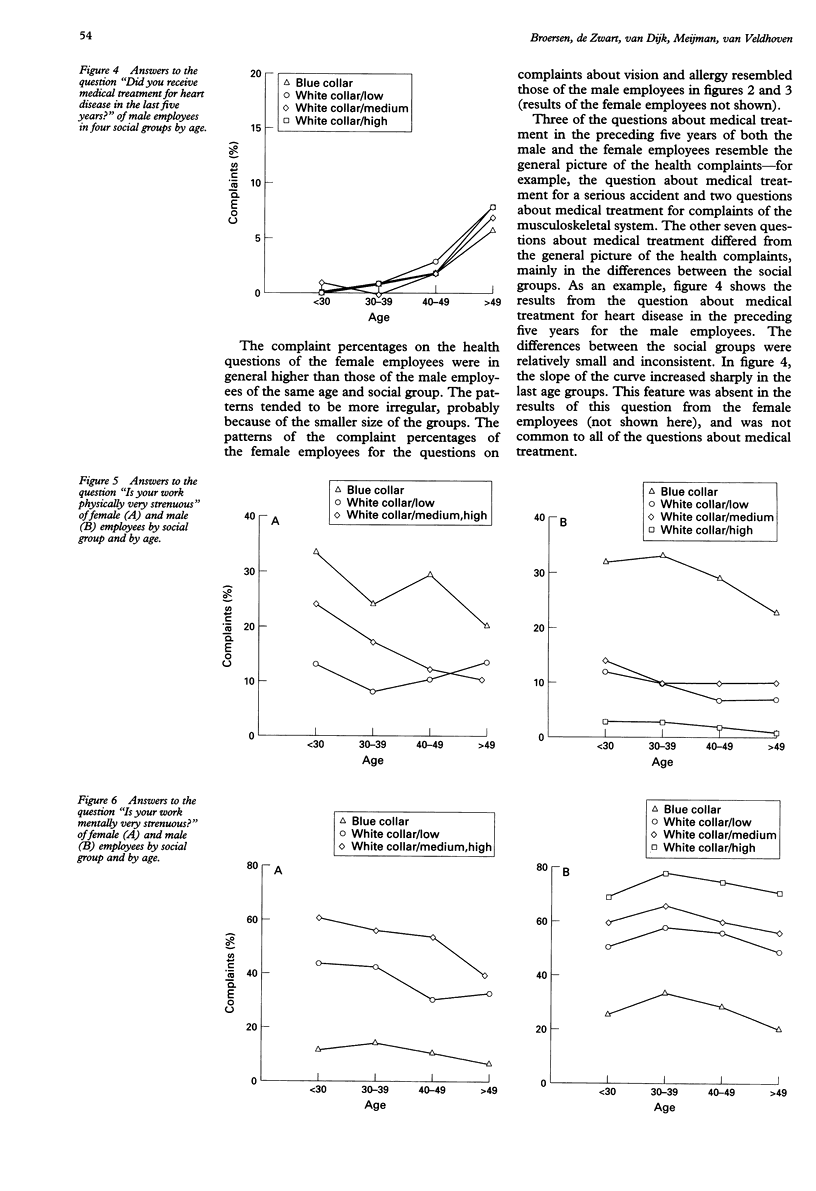
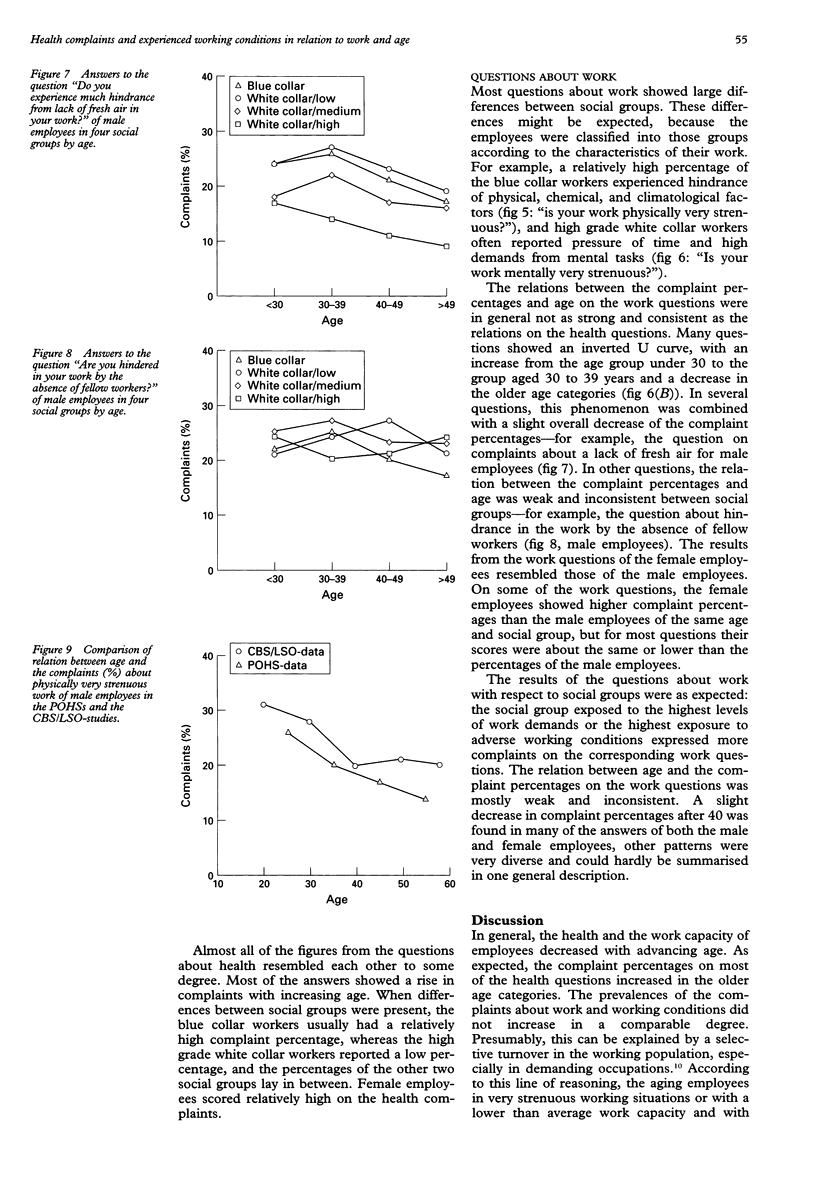
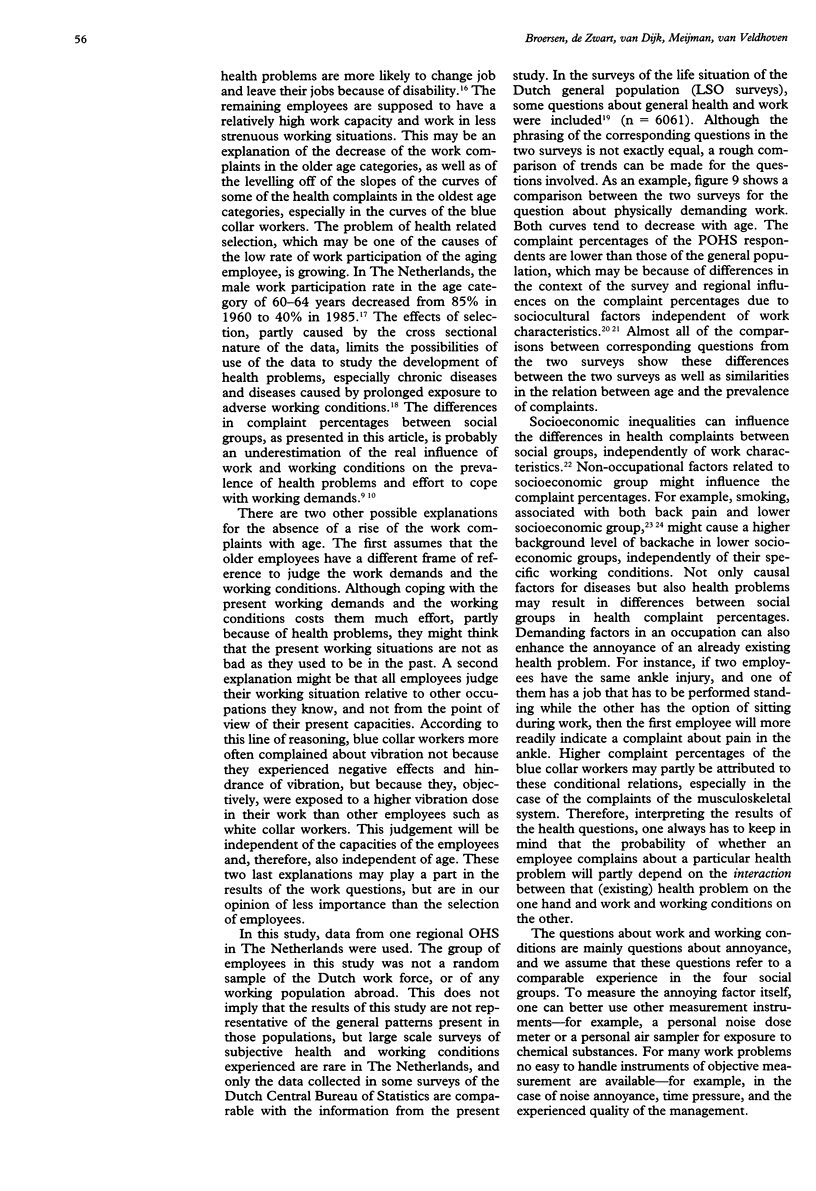

Selected References
These references are in PubMed. This may not be the complete list of references from this article.
- Boshuizen H. C., Verbeek J. H., Broersen J. P., Weel A. N. Do smokers get more back pain? Spine (Phila Pa 1976) 1993 Jan;18(1):35–40. doi: 10.1097/00007632-199301000-00007. [DOI] [PubMed] [Google Scholar]
- Mackenbach J. P. Socio-economic health differences in The Netherlands: a review of recent empirical findings. Soc Sci Med. 1992 Feb;34(3):213–226. doi: 10.1016/0277-9536(92)90264-q. [DOI] [PubMed] [Google Scholar]
- Nygård C. H., Luopajärvi T., Ilmarinen J. Musculoskeletal capacity and its changes among aging municipal employees in different work categories. Scand J Work Environ Health. 1991;17 (Suppl 1):110–117. [PubMed] [Google Scholar]
- Riihimäki H., Wickström G., Hänninen K., Luopajärvi T. Predictors of sciatic pain among concrete reinforcement workers and house painters--a five-year follow-up. Scand J Work Environ Health. 1989 Dec;15(6):415–423. doi: 10.5271/sjweh.1836. [DOI] [PubMed] [Google Scholar]


